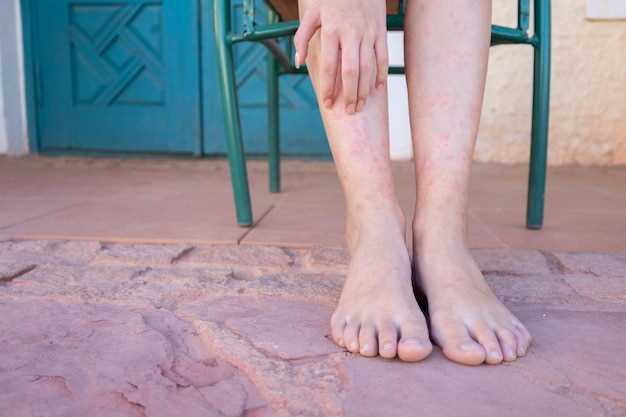
Tired of dealing with swollen feet? Look no further than Losartan to help alleviate your discomfort. Losartan is a trusted medication known for its ability to reduce swelling and improve circulation, providing you with the relief you need.
Don’t let swollen feet hold you back any longer. Try Losartan today and step into a more comfortable tomorrow!
Understanding Losartan

Losartan is a medication commonly prescribed to treat high blood pressure (hypertension) and to protect the kidneys from damage due to diabetes. It belongs to a class of medications known as angiotensin II receptor blockers (ARBs). Losartan works by blocking the action of a hormone called angiotensin II, which causes blood vessels to constrict. By blocking this hormone, losartan helps to relax blood vessels, allowing blood to flow more easily and lowering blood pressure.
Losartan is also used to reduce the risk of stroke in patients with high blood pressure and an enlarged heart. It may be prescribed alone or in combination with other medications to achieve the desired blood pressure control. It is important to take losartan as directed by your healthcare provider and to follow up regularly to monitor its effectiveness.
Swollen Feet: A Common Issue
Swollen feet are a common issue that many people experience, and it can be uncomfortable and even painful. There are several factors that can contribute to swollen feet, including certain medications like Losartan.
Causes of Swollen Feet
Swelling in the feet can be caused by a variety of factors, including:
| 1. Poor circulation |
| 2. Fluid retention |
| 3. Prolonged standing or sitting |
| 4. Injury or trauma |
| 5. Certain medications |
Losartan, a commonly prescribed medication for high blood pressure, is known to potentially cause swelling in the feet as a side effect. It’s essential to monitor any changes in your body while taking Losartan and consult your healthcare provider if you experience severe or persistent swelling.
Causes of Swollen Feet
Swollen feet can be a side effect of Losartan, a common medication used to treat high blood pressure. Losartan is known to cause fluid retention in some individuals, leading to swelling in the feet and ankles. This side effect is generally mild and may improve over time as the body adjusts to the medication.
Other potential causes of swollen feet include standing or sitting for long periods, wearing tight-fitting shoes, pregnancy, obesity, venous insufficiency, and certain medical conditions such as kidney disease or heart failure. It is essential to consult with a healthcare provider to determine the underlying cause of swollen feet and develop an appropriate treatment plan.
Other Factors Contributing to Swelling

Swelling in the feet can be caused by various factors besides the side effects of Losartan. Some common contributors to swelling include:
1. Diet: A high sodium intake can lead to fluid retention, causing swelling in the feet. It is important to watch your salt intake and opt for a balanced diet rich in fruits and vegetables.
2. Sedentary Lifestyle: Lack of physical activity can contribute to poor circulation, which may result in swelling. Regular exercise can help improve blood flow and reduce swelling in the feet.
3. Obesity: Excess weight puts additional pressure on the veins in the legs, leading to swelling in the feet. Maintaining a healthy weight through proper diet and exercise can alleviate this issue.
4. Pregnancy: Hormonal changes and increased blood volume during pregnancy can cause swelling in the feet. It is important for pregnant women to elevate their legs and wear comfortable shoes to reduce swelling.
Understanding these additional factors contributing to swelling can help you take proactive steps to manage and prevent this common issue.
Other Factors Contributing to Swelling
Aside from Losartan, there are other factors that can contribute to swelling in the feet and ankles. It’s essential to consider these factors to effectively manage and prevent swelling:
- Diet: Consuming too much salt can lead to water retention, causing swelling in the extremities. It’s important to monitor your salt intake and opt for a low-sodium diet.
- Hydration: Dehydration can also contribute to swelling, so make sure to drink an adequate amount of water throughout the day.
- Standing or Sitting for Prolonged Periods: Remaining in the same position for a long time can hinder proper circulation and result in swelling. Try to incorporate movement and breaks into your daily routine.
- Obesity: Excess weight puts added pressure on the lower extremities, leading to swelling. Maintaining a healthy weight through diet and exercise can help alleviate swelling.
Consult Your Healthcare Provider
If you experience persistent swelling in your feet or ankles, it’s crucial to consult your healthcare provider. They can assess your condition, determine the underlying cause, and recommend appropriate treatment options.
Prevention and Management
Managing salt intake is crucial in preventing and reducing swelling in the feet. Excess salt can cause the body to retain water, leading to fluid buildup and swelling. It is recommended to monitor your salt intake by reading food labels and choosing low-sodium options.
Increase your consumption of potassium-rich foods, such as bananas, sweet potatoes, and spinach, as potassium helps regulate fluid balance in the body. Incorporating these foods into your diet can help counteract the effects of sodium and reduce swelling.
- Limit processed and packaged foods, as they tend to be high in sodium.
- Opt for fresh fruits and vegetables, lean proteins, and whole grains.
- Drink plenty of water throughout the day to stay hydrated and flush out excess salt from your system.
Regular exercise can also help improve circulation and reduce swelling. Engaging in activities like walking, swimming, or yoga can promote blood flow to the feet and minimize fluid retention. Aim for at least 30 minutes of moderate exercise most days of the week for optimal benefits.
If you experience persistent swelling despite these measures, consult your healthcare provider to determine the underlying cause and appropriate treatment options.
Monitoring Salt Intake
Monitoring your salt intake is crucial when taking Losartan to prevent swelling and other health issues. Excessive salt consumption can lead to fluid retention, which may exacerbate swelling in the feet and other parts of the body.
It is recommended to limit your daily salt intake to no more than 2,300 milligrams per day, which is equivalent to about one teaspoon of salt. Be mindful of hidden sources of salt in processed foods, canned goods, and restaurant meals.
How to Monitor Salt Intake:
1. Read food labels to check the sodium content per serving.
2. Cook meals at home using fresh ingredients and herbs for flavor instead of salt.
3. Avoid adding extra salt to your meals at the table.
Regular Exercise Regimen
Regular exercise is an essential part of maintaining overall health and well-being, and it can also help reduce the risk of swollen feet when taking Losartan. Engaging in a consistent exercise routine can improve circulation, reduce fluid retention, and strengthen muscles, all of which can contribute to healthier feet and decreased swelling.
Types of Exercise
There are several types of exercises that can be beneficial for reducing swelling in the feet. Cardiovascular exercises like walking, jogging, swimming, or cycling can help improve circulation and reduce fluid buildup. Strength training exercises targeting the lower body muscles can also be effective in preventing swelling by improving muscle tone and supporting proper fluid balance.
Exercise Tips
| 1. | Stay hydrated during exercise to help prevent dehydration, which can exacerbate swelling. |
| 2. | Avoid high-impact exercises that may exacerbate foot swelling, especially if you already have existing foot problems. |
| 3. | Wear proper footwear with good arch support and cushioning to reduce strain on the feet during exercise. |
| 4. | Start slowly and gradually increase the intensity of your workouts to prevent overexertion and potential injury. |
By incorporating a regular exercise regimen into your routine and following these tips, you can help manage and prevent swelling in your feet while taking Losartan.
